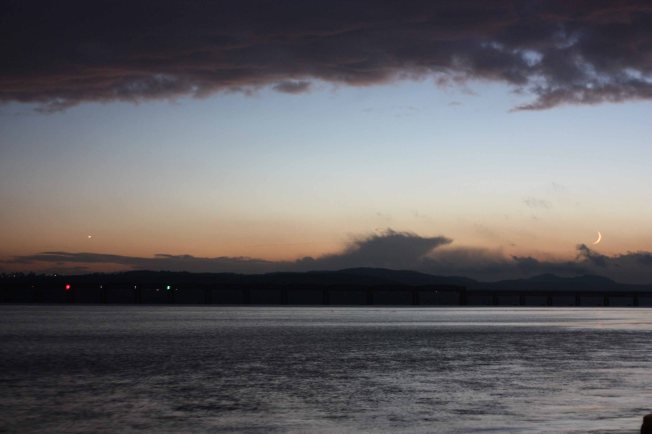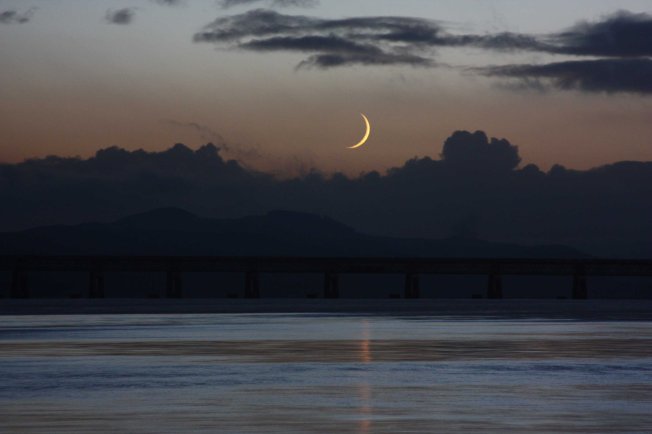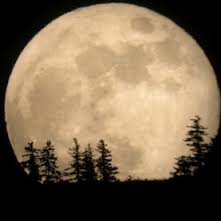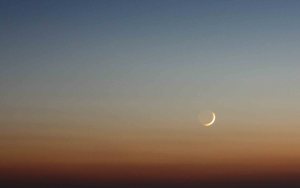Following on from my last post, I’ve been able to spot Venus after sunset on several occasions over the past week thanks to the clear skies we’ve been enjoying. Tonight, the twilight sky was enhanced by the arrival of a young crescent Moon, about the same height above the horizon as Venus but about a hand-span to the right. We had quite a bit of cloud and some rain during the afternoon, so I wasn’t sure if I’d be able to see the two objects together; however the sky began to clear around sunset and as it got dark there was a nice strip of cloud-free sky in just the right place.
 Since Venus and the Moon were so far apart, I could only fit them both in by taking quite a wide angle shot, so the Moon looks pretty small in the photo. It looked so lovely, though, that I felt it deserved a close-up picture too. The image below shows the Moon above the Rail Bridge, with the yellow light of the low Moon reflected in the River Tay – I’m rather pleased with this one!
Since Venus and the Moon were so far apart, I could only fit them both in by taking quite a wide angle shot, so the Moon looks pretty small in the photo. It looked so lovely, though, that I felt it deserved a close-up picture too. The image below shows the Moon above the Rail Bridge, with the yellow light of the low Moon reflected in the River Tay – I’m rather pleased with this one!
 Tomorrow night – Wednesday 6th – the Moon will have moved higher in the sky and will appear to the upper right of Venus, and a bit closer. If the sky is clear I may try to take a comparison shot and post it too!
Tomorrow night – Wednesday 6th – the Moon will have moved higher in the sky and will appear to the upper right of Venus, and a bit closer. If the sky is clear I may try to take a comparison shot and post it too!
NB – I’ve also finally got round to updating my Night Sky notes for November – just click on ‘The Sky This Month’ tab at the top of the page to find out what to look out for over the coming weeks.


